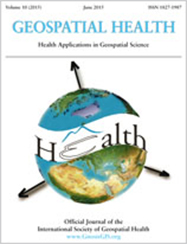 Smart Citations
Smart CitationsSee how this article has been cited at scite.ai
scite shows how a scientific paper has been cited by providing the context of the citation, a classification describing whether it supports, mentions, or contrasts the cited claim, and a label indicating in which section the citation was made.
Spatial-temporal risk factors in the occurrence of rabies in Mexico
Rabies is a zoonotic disease that affects livestock worldwide. The distribution of rabies is highly correlated with the distribution of the vampire bat Desmodus rotundus, the main vector of the disease. In this study, climatic, topographic, livestock population, vampire distribution and urban and rural zones were used to estimate the risk for presentation of cases of rabies in Mexico by co- Kriging interpolation. The highest risk for the presentation of cases is in the endemic areas of the disease, i.e. the States of Yucatán, Chiapas, Campeche, Quintana Roo, Tabasco, Veracruz, San Luis Potosí, Nayarit and Baja California Sur. A transition zone for cases was identified across northern Mexico, involving the States of Sonora, Sinaloa, Chihuahua, and Durango. The variables topography, vampire distribution, bovine population and rural zones are the most important to explain the risk of cases in livestock. This study provides robust estimates of risk and spread of rabies based on geostatistical methods. The information presented should be useful for authorities responsible of public and animal health when they plan and establish strategies preventing the spread of rabies into rabies-free regions of México.
Altmetrics
Downloads
Citations


How to Cite

This work is licensed under a Creative Commons Attribution-NonCommercial 4.0 International License.
PAGEPress has chosen to apply the Creative Commons Attribution NonCommercial 4.0 International License (CC BY-NC 4.0) to all manuscripts to be published.






